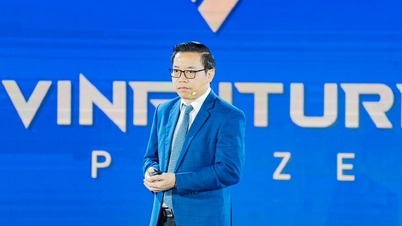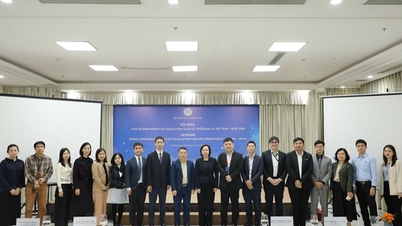Recently, a video of two AI chatbots chatting with each other in a language called 'Gibberlink' went viral on social media. The video has attracted over 13.7 million views, leaving many viewers fascinated and confused. This has sparked different opinions about AI developing its own language.
Source: Gibberlink |
In the video, an AI agent calls another AI assistant to survey hotel wedding venues. During the conversation, the two AI agents recognize each other as virtual assistants and quickly switch from human language to Gibberlink mode.
Gibberlink is a machine language that allows AI systems to communicate more effectively. It was developed by software engineers Boris Starkov and Anton Pidkuiko. The mode consists of a series of combined sounds, reminiscent of the beeps of R2-D2 in the Star Wars movies.
Gibberlink has brought a new step forward in AI-to-AI communication, making it faster and less resource-intensive than human voice.
According to the development team, this protocol has near-absolute accuracy, helping AI exchange information clearly even in noisy environments. Communication efficiency is significantly improved when information transmission time is reduced by 80% and computation costs are reduced by 90% compared to conventional methods.
Next, some errors due to misunderstanding in natural language are also overcome by this technology.
When AI has its own language, instead of having to decipher complex or ambiguous context in human language, AI can use Gibberlink to communicate information consistently and accurately. By improving the reliability of communication, AI systems can perform tasks more effectively.
On the other hand, Gibberlink can offload complex processing requirements and speed up data transmission, allowing AI systems to operate more smoothly in applications that require quick responses such as automation, big data analytics, and smart device control.
Humans cannot understand AI
However, the problem lies in this: Humans cannot understand and monitor this method of communication. This leads to concerns about control and security, causing data security risks, potential risks of information leakage or exploitation by bad guys.
Furthermore, establishing its own language is an important step that brings AI closer to autonomy. In fact, AI agents are expected to make decisions or perform tasks on their own based on the user's experience, environment, and input data. Gartner, a technology research and advisory company (USA), predicts that by 2028, more than 15% of daily work will be decided by AI agents.
This opens up new possibilities in technology but also raises challenges regarding ethics, control and responsibility in developing AI.
Therefore, setting appropriate limits and applying the technology responsibly will be crucial to the future of AI.




![[Photo] National Assembly Chairman Tran Thanh Man attends the VinFuture 2025 Award Ceremony](/_next/image?url=https%3A%2F%2Fvphoto.vietnam.vn%2Fthumb%2F1200x675%2Fvietnam%2Fresource%2FIMAGE%2F2025%2F12%2F05%2F1764951162416_2628509768338816493-6995-jpg.webp&w=3840&q=75)
![[Photo] 60th Anniversary of the Founding of the Vietnam Association of Photographic Artists](/_next/image?url=https%3A%2F%2Fvphoto.vietnam.vn%2Fthumb%2F1200x675%2Fvietnam%2Fresource%2FIMAGE%2F2025%2F12%2F05%2F1764935864512_a1-bnd-0841-9740-jpg.webp&w=3840&q=75)















![[Video] Dong Do Hospital celebrates 15 years of operation](https://vphoto.vietnam.vn/thumb/402x226/vietnam/resource/IMAGE/2025/12/06/1764980267666_img-2287-5359-png.webp)



















































































Comment (0)